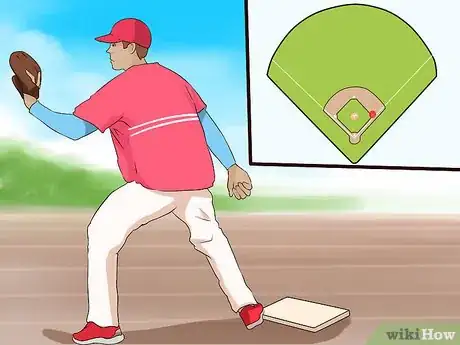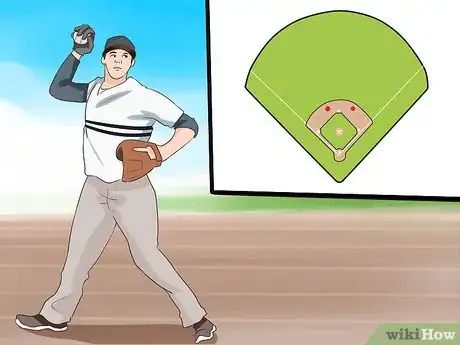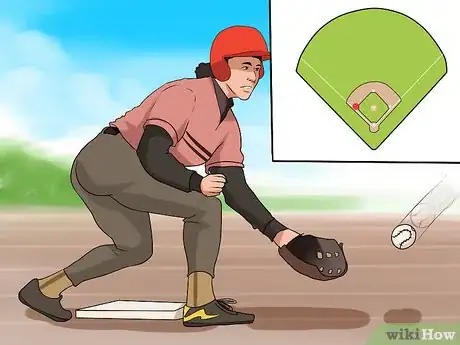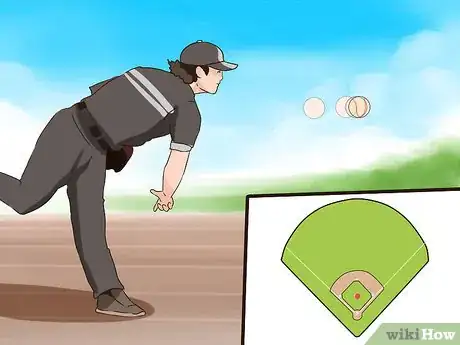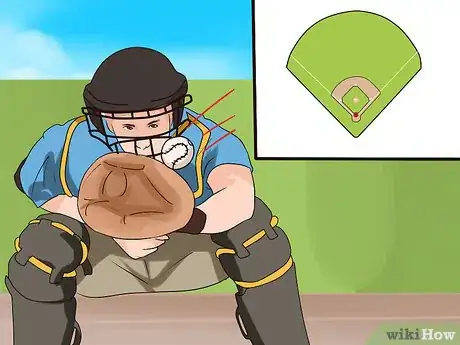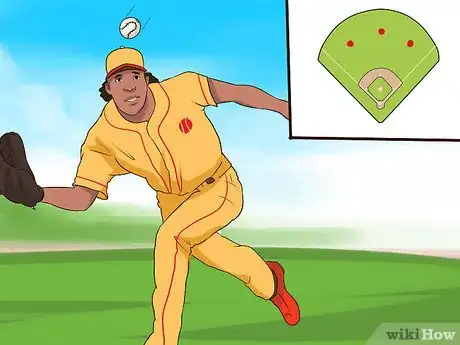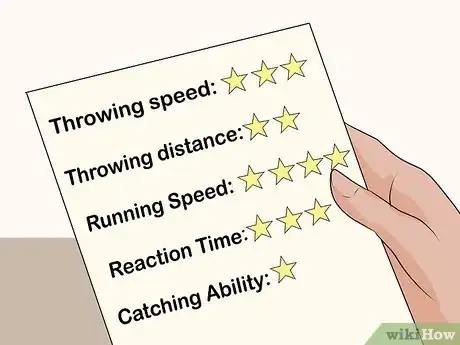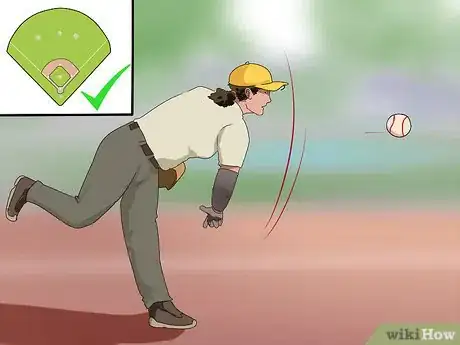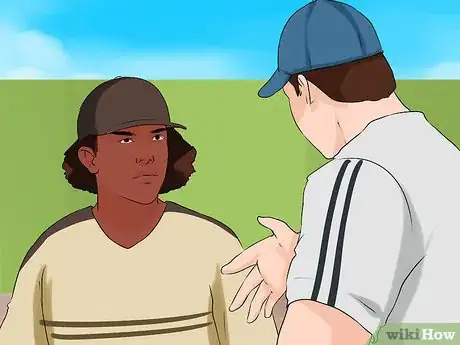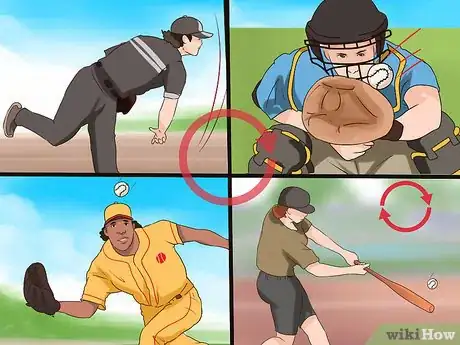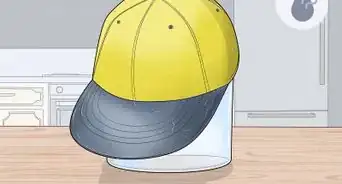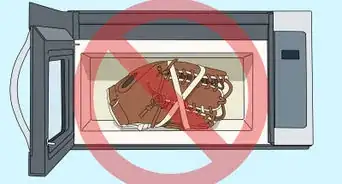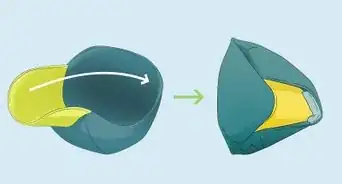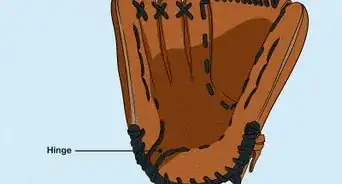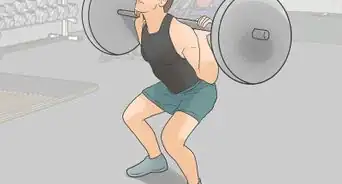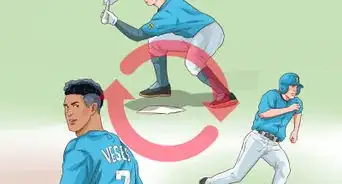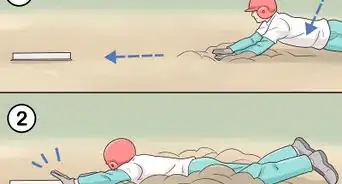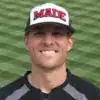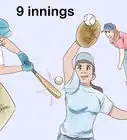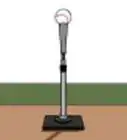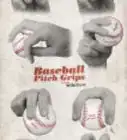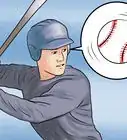This article was co-authored by Isaac Hess. Isaac Hess is a Baseball Coach, Instructor, and the Founder of MADE Baseball Development and Champion Mindset Training Program, a baseball training program based in Los Angeles, California. Isaac has over 14 years of experience coaching baseball and specializes in private lessons and tournaments. He has played baseball for both professional and collegiate leagues including Washington State University and the University of Arizona. Isaac was ranked as one of Baseball America's top 10 prospects for 2007 and 2008. He earned a BS in Regional Development from the University of Arizona in 2007.
This article has been viewed 56,297 times.
Baseball is a sport with many different choices to make. You want to choose a position that you enjoy, but that also allows you to play to your strengths. By learning about and practicing various positions, you can determine your best skills and pick the right position. At the same time, you will increase your knowledge of the game and become a better player overall.
Steps
Practicing Various Positions
-
1Try your hand at first base. As the name suggests, a first baseman is responsible for watching the line between home plate and first base. Lots of balls get thrown toward first base, so get practice catching if you want play the position. You'll need to be skilled at keeping a foot on the base while also catching balls headed your way in order to make outs.[1]
- First basemen need good focus, since the position gets action in many plays.
- If you are tall, this can be to your advantage as a first baseman. You will be able to stretch to catch errant balls while still maintaining contact with the bag.
- A strong throwing arm is less necessary for this position.
-
2Practice the shortstop and second base positions. These two positions often work together, so try your hand at both if you are interested in either. Shortstops and second baseman need to pay attention and think ahead when runners are on or headed toward bases, so that they are prepared to make a catch, touch a base, tag a runner, or get a ball to another baseman to make an out.[2]
- Shortstops hover between second and third base, which means they need to be prepared for action. These players often have more movement than any other, so stay focused when you're trying out the position.
- Outfielders frequently throw balls to the shortstop, who relays them to one of the bases to make an out.
- A good throwing arm, speed, and agility are essential for both second basemen and shortstops.
Advertisement -
3Test your skills at third base. Be prepared to see less frequent action when playing third base, since this position probably has less contact with the ball than the other infield positions. However, you'll need to work on your speed, because when your moment comes, you'll have to act fast to catch a ball and try to throw it all the way to first to try and get an out.[3]
- Bunts and grounders often go to a third basemen, so concentrate on reacting to these if you are interested in the position.
-
4Perfect your throwing as a pitcher. Standing in the center of the field, pitchers get a lot of attention, but they have a tough job. Practice your throwing arm, since you'll need to throw pitches that are hard for the batter to hit--fast ones, but also curves, screwball, and others. Don't neglect your catching skills, either, because if you want to be a pitcher, you'll need to be ready for bunts, grounders, and popups.[4]
-
5See how good you are as a catcher. While it might look like the catcher doesn't move much, it's one of the most important positions. If you're a good leader, then try this position. You'll be facing your teammates, and have to be good at “calling the game.” In particular, you'll have to work well with the pitcher, by signaling which type of pitch is needed.[5]
- If you're an active player but not the best hitter, you might consider this position, since batting ability isn't necessarily considered a high priority for it.
- Catchers may also need to keep track of balls and strikes, and be ready to participate in infield plays when needed. If you're trying out for the catcher position, keep your mind on these skills as well.[6]
-
6Give the outfielder position a try. Though sometimes they get a bad name or are looked down on, outfield positions show their importance in critical moments of the game. There are three outfield positions, but the general skills needed for them overlap. Try one of the outfield positions if you're a great hitter but fielding isn't your strength.[7]
- Center field needs to be prepared to cover a lot of ground. If any balls make it past the shortstop and second baseman, or to the wall, it'll be your job to go after them and get them back to the diamond to make an out.
- Left field concentrates on the part of the field past third base. This position can have to handle a lot of hits, since so many hitters are right-handed.
- Right field will need a strong arm. If a deep ball comes your way, you may have to throw it all the way to third base, since the hitter will have had more run time.
- Whichever outfield position you try, be prepared to have less frequent action. On the other hand, you'll need to stay focused on the game for when your moment comes, and when it does, you'll have to act fast and cover a lot of ground.
-
7Don't neglect your hitting skills. Every player will benefit from being a strong and consistent hitter. Practice lots of swings so you'll be ready when it's your turn to step up to the plate.
- Your coach may develop a batting order based on hitting ability, but other factors come into play as well, so make sure to ask if you have questions.
Identifying Your Strengths
-
1Make a list of your strengths and weaknesses. To make the best choice, you'll have to have a good sense of what you excel at, and what you might need to improve on. Make some notes for yourself to rank your ability in critical skills, including:
- Throwing speed
- Throwing distance
- Running speed
- Reaction time
- Catching ability
-
2Choose a position that makes sense for your skill set. You might have your heart set on a particular position. Baseball is a team sport, however, and a team is only strong if its members are in the right plays. Think about which skills you are good at, and choose a position that needs your strengths most of all, and allows you to work on your weaknesses outside of game time.[8]
- For instance, you might think that you've always wanted to be a shortstop, but have trouble getting balls to other basemen as quickly as the position requires.
- On the other hand, maybe no one can touch your throwing distance. That means that right field might be the position for you. It will give you a chance to shine when you throw beautifully all the way across the field.
- You can also work on making quick throws in practice time to improve on your weaker skill.
-
3Talk to your coach. If you're interested in playing a particular position, your coach can work with you on how to improve, and try to give you practice at it. Or, if you're not sure of which position you want to concentrate on, talk to a coach about it. They can give you feedback and share observations about what your strengths might be so that you can make the right decision.
-
4Don't overspecialize. Good players will be able to give any position a try, and be better off for it. Though pros get a lot of attention for being a star in one position, coaches put value in “utility players,” those able to perform well in lots of different plays and positions. Experts also warn that overspecialization, especially when you're young, can actually hurt your playing ability.[9]
- If you're unsure of what position to play, give them all a try!
- If you're tired of playing one position, or want to expand your skill set, practice a new one!
- Ask your coach if you want to try something new.
Expert Q&A
-
QuestionWhat makes a good baseball player?
 Isaac HessIsaac Hess is a Baseball Coach, Instructor, and the Founder of MADE Baseball Development and Champion Mindset Training Program, a baseball training program based in Los Angeles, California. Isaac has over 14 years of experience coaching baseball and specializes in private lessons and tournaments. He has played baseball for both professional and collegiate leagues including Washington State University and the University of Arizona. Isaac was ranked as one of Baseball America's top 10 prospects for 2007 and 2008. He earned a BS in Regional Development from the University of Arizona in 2007.
Isaac HessIsaac Hess is a Baseball Coach, Instructor, and the Founder of MADE Baseball Development and Champion Mindset Training Program, a baseball training program based in Los Angeles, California. Isaac has over 14 years of experience coaching baseball and specializes in private lessons and tournaments. He has played baseball for both professional and collegiate leagues including Washington State University and the University of Arizona. Isaac was ranked as one of Baseball America's top 10 prospects for 2007 and 2008. He earned a BS in Regional Development from the University of Arizona in 2007.
Baseball Coach & Instructor It's important to have the mindset that you're willing to play any position. That way, if your coach needs help in any one of the 9 positions on the field, you'll be available to play, even if it's not your strongest position.
It's important to have the mindset that you're willing to play any position. That way, if your coach needs help in any one of the 9 positions on the field, you'll be available to play, even if it's not your strongest position.
References
- ↑ http://www.momsteam.com/sports/baseball/the-sport/what-are-the-different-positions-in-baseball
- ↑ http://www.howbaseballworks.com/Fielding.htm
- ↑ http://www.momsteam.com/sports/baseball/the-sport/what-are-the-different-positions-in-baseball
- ↑ http://www.momsteam.com/sports/baseball/the-sport/what-are-the-different-positions-in-baseball
- ↑ http://www.howbaseballworks.com/Fielding.htm
- ↑ http://www.momsteam.com/sports/baseball/the-sport/what-are-the-different-positions-in-baseball
- ↑ http://www.howbaseballworks.com/Fielding.htm
- ↑ http://protips.dickssportinggoods.com/sports-and-activities/baseball/defensive-lineup-strategies-for-youth-baseball
- ↑ http://www.coachandplaybaseball.com/baseball-position.html
